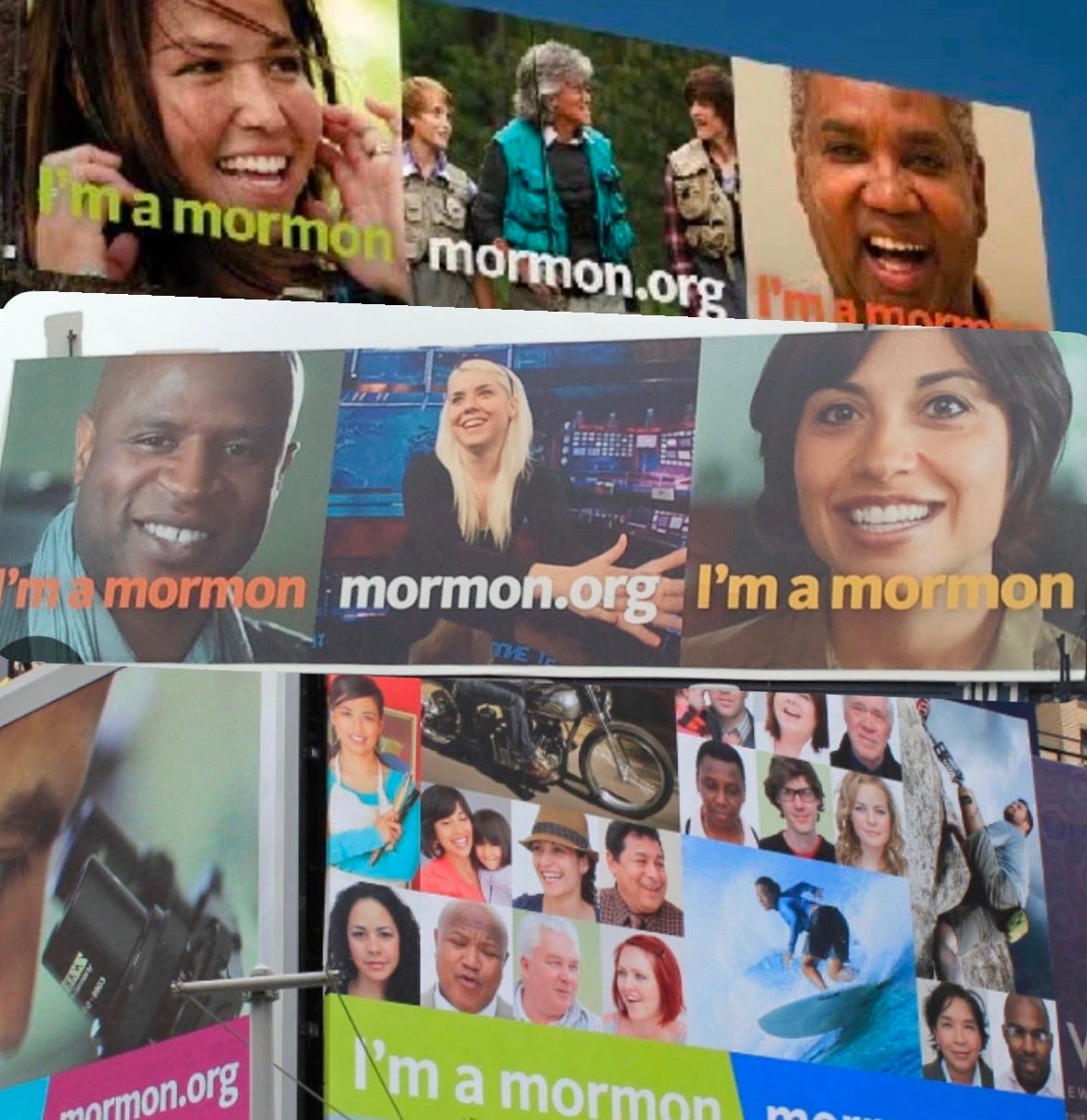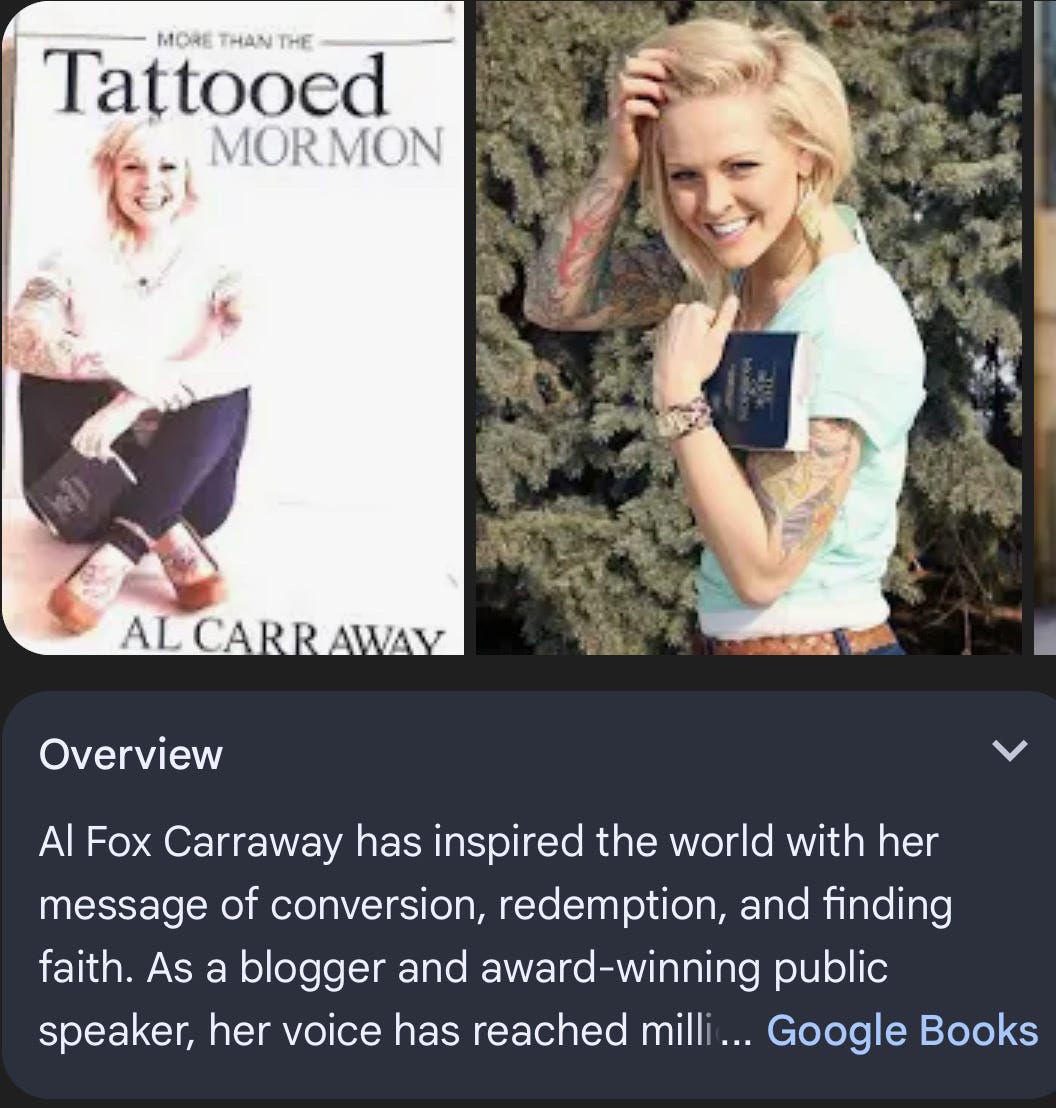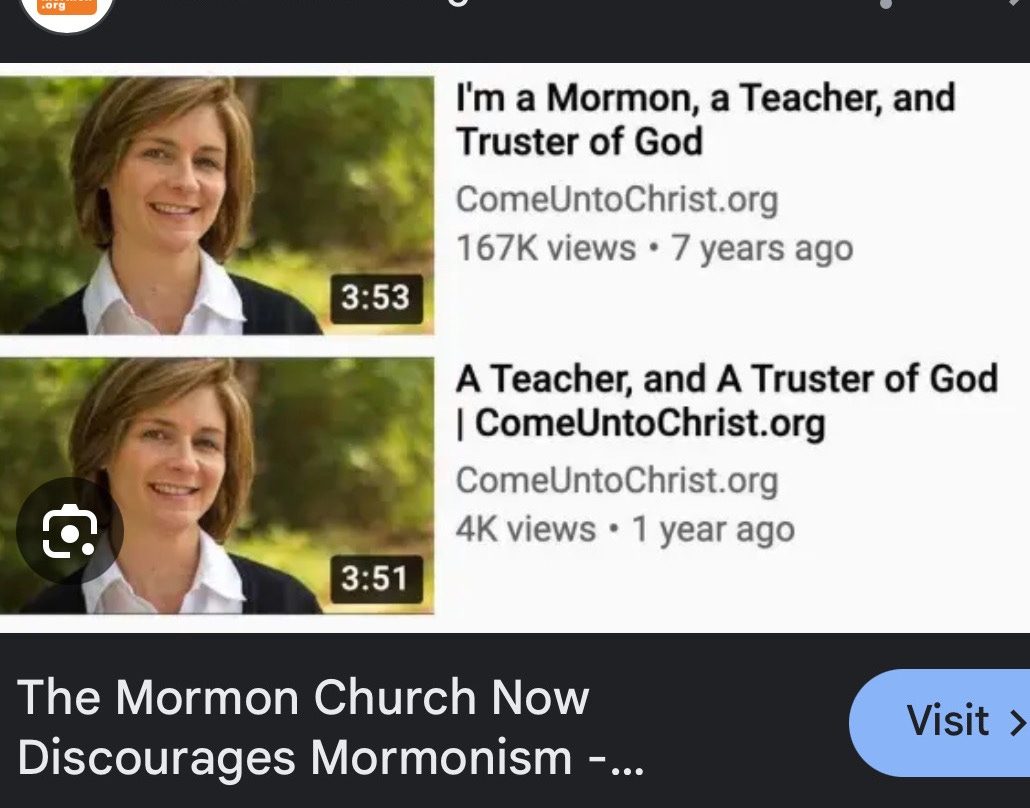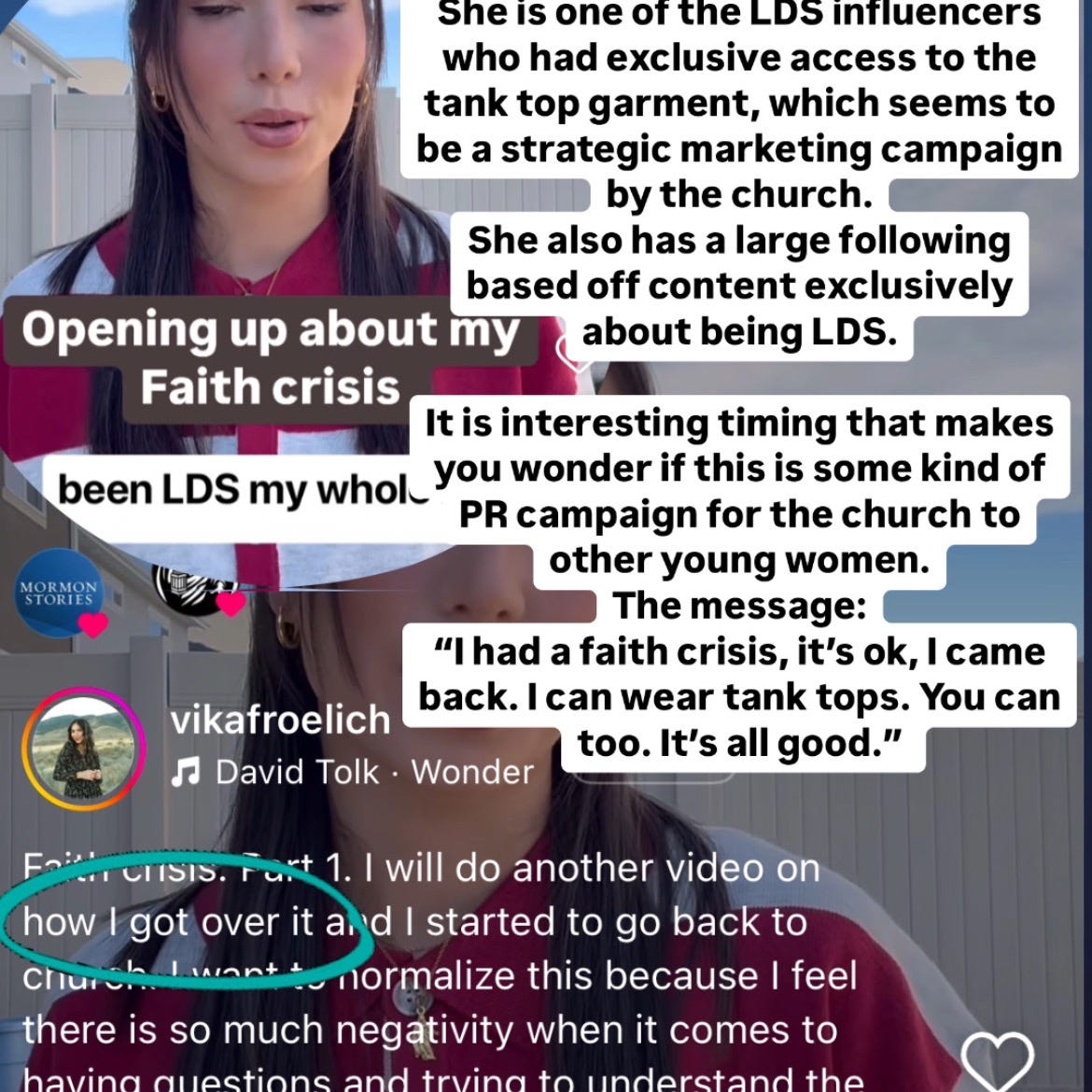Faithwashed: The Mormon-to-LDS Rebrand Through Free Labor & Influencer Campaigns
How Strategic Marketing is Reshaping Brand Aesthetics to Keep Members In
It’s 2010. LDS Church President Thomas S. Monson has just commissioned Bonneville Communications, an LDS-owned PR firm, to launch a worldwide media campaign. Buses, billboards, movie trailers, and digital platforms light up with a new message:
“I’m a Mormon.”
The Church reportedly pours around $300 million into this global rebrand, buying up the domain mormon.org and crafting a sleek, diverse image for a religion desperate to shift the narrative.
The Goal? Dismantle stereotypes. Expand the Mormon brand. Showcase faces of all colors, backgrounds, and lifestyles. Make it clear: Anyone can be a Mormon.
Enter Al Carraway, aka “The Tattooed Mormon.” She challenged the norms and embodied the message that you could still belong— tattoos and all.
But just eight years later, President Russell M. Nelson flips the script.
Suddenly, the word “Mormon” is no longer a proud badge of identity—it’s “a victory for Satan.” With a single statement, he erases nearly a decade of endless free labor and effort from its most devout members. The Church quietly dismantles mormon.org, deletes a Mormon Facebook page with over 850,000 personal profiles from the “I’m a Mormon”campaign, and begins pushing new hashtags that scrub the Mormon label from its digital presence.
Mormon is out. TCOJCOFLDS* or LDS is in.
*The Church of Jesus Christ of Latter Day Saints or Latter Day Saints
Gone is the inclusive diversity campaign. Gone is the “Tattooed Mormon” narrative. And gone, too, is the illusion of autonomy among everyday members who had spent years voluntarily promoting the Church online.
The shift was not accidental.
What replaced it was far more curated, more controlled, and far less diverse.
Enter the era of the LDS influencer—young, light skinned, wealthy, fashionable women who now serve as the face of the faith. Their curated lives subtly promote a brand-new aesthetic—one designed not for inclusion, but for retention. Specifically, retaining the one demographic fleeing the Church the fastest: Women.
These influencers model the new “thoughtfully designed” garments (think tank tops and flowy skirts), but somehow, the only people showcasing these “updates” are affluent white American women—not women of color or those in the developing countries of a global church. Accessibility remains selective. So does visibility.
And this isn’t just coincidence—it’s marketing.
A strategic campaign employing dozens of LDS women influencers, to promote garment friendly outfits and faith promoting, “blessed” lifestyles.
—LDS Influencer Going to an Influencer Event Hosted by The LDS Church—
These influencers might drop mentions of Church leaders, tag appearances at Church events, and more recently, signal a casual kind of “faith questioning/crisis” that always, always circles back to staying in the fold. “It’s okay to ask questions,” they say. “You can still wear a tank top. You can still belong.”
The message is clear: this isn’t a Church embracing doubt—it’s a Church repackaging obedience as edgy relatability.
Compare that to the original “I’m a Mormon” campaign: broad, global, diverse. Versus the current messaging: narrower in focus, more aligned with mainstream American Christianity. Consider just a few of the changes in recent years:
“Home” and “visiting teachers” are now “ministers.”
Crosses—once taboo—are sold and worn.
Church meetings are shorter.
Sister missionaries can wear pants.
Women no longer veil in the temple.
Young women’s recitations now include exaltation.
Tattoos and piercings are no longer prohibited.
Crucifixes are used on maps.
Youth now attend worship concerts.
The language in temple marriage ceremonies no longer positions women beneath their husbands.
In short: it’s all about appearing modern, progressive, and palatable— without actually ceding institutional control.
Meanwhile, despite a near $300 billion cash reserve and massive real estate assets, the Church still demands 10% of every member’s income through tithing. On top of that, it relies on unpaid labor to sustain its operations. Members, including men, women and children, fill every organizational role from janitor to spiritual leader. They clean buildings, plan events, teach classes, put on camps, fundraisers, organize funerals, run baptisms, and more—all without compensation.
Just yesterday, a 12-year-old boy knocked on my door with a tithing slip, asking for donations so he could participate in an LDS youth camp. Cost of the fundraiser? $20. For a spaghetti dinner… at their church. But he doesn’t get that money, nor does it directly go to his ward. Instead, these donations collected by youth compel patrons, most of whom are already members of the ward, to donate more money in the ‘other’ category, which then gets sent to LDS headquarters.
It raises many questions like:
Why does a Church with billions of dollars in reserves spend so much on PR—and so little on its own people?
Why do they exploit the real labor of its’ members?
Put simply, it’s about power and control. If you can control the bodies of those who follow you, you will always maintain power over them.
It’s hard to ignore how the LDS Church has shifted. From a global and diverse identity to a rebranded image that’s young, rich, white, and curated for social media. A church that claims explosive growth while hemorrhaging members is clearly pivoting—not to reach new converts, but to hold on to its most loyal (and profitable) demographic.
And what better way to do that than to keep leveraging free labor—especially from the very women they’re most afraid of losing?
—What are your thoughts on the LDS influencer campaigns?—
Like my writing? Consider subscribing to support my work and stay connected to the novonexus.healspace community.









This is so real and now I need to lie down. I honestly loved the I’m a Mormon campaign. It was diverse and inclusive! It really shows how much the hobby causes of individual general authorities affect the “revelation” of the church.
The more I see the more I feel like this is a church that is just not truly about Jesus. It is a business that relies heavily on marketing, branding, data, and public opinion. And it is willing to advertise in a way that is emotionally manipulative. I don’t fault businesses for doing these things, it is how they grow and provide a product. But consumers know at the end of the day that they are dealing with a business. For me, the insidious part is members and leaders insisting all day every day that the LDS church = Jesus’s church and he runs the show. I think it’s more correct to say it is a business that uses Jesus‘s trademark for free and is willing to throw him under the bus when necessary in order to grow its customer base.